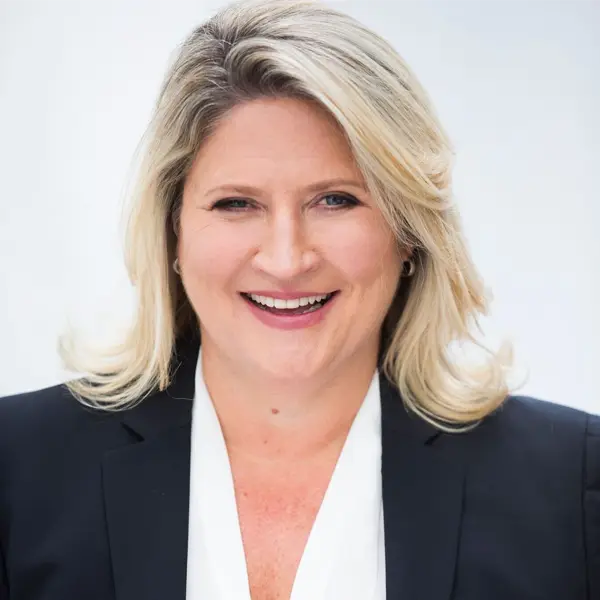Key statistics
- Australian women hold 40% less net wealth than men on average.
- 35% of women aged 65+ have less than $1,000 in savings, compared to 22% of men
- The gender pay gap begins in childhood, girls are paid pocket money of $7.50 per week on average, compared to $10.30 for boys.
- Men are more likely to ask for a pay rise (50% of men asked, compared to only 32% of women).
- When they do get a pay rise, women receive less: on average $2,424, compared to $4,000 for men.
How much wealth do Australian women have?

"Women continue to have less wealth than men, simply because of their gender. The average woman has to work 11 years more than the average man, to retire with the same superannuation balance."
The figure on its own, without context, could be read as impressive: Finder research shows that the average Australian female has $428,000 in net wealth – which is defined as the total value of what you own (your assets) minus what you owe (your liabilities).
But it's when we consider this figure against the average for our male counterparts – $597,000 or a whopping $169,000 more – that we realise the true inequality of the situation. The difference in average wealth is a whopping 40%.
This disparity is likely an outcome of the outstanding performance of the Australian housing market and global sharemarkets over the past 5 years. Both have driven high superannuation and housing returns – as both are assets that men have more wealth concentrated in.

"The [federal government] increase in superannuation contributions is a welcome step towards addressing the retirement savings gap women face due to caregiving responsibilities. However, we must recognise this gap is part of a broader issue, where unpaid care disproportionately impacts women's economic security."
The most recent Australian Taxation Office (ATO) data corroborates that superannuation is a key factor contributing to the gender wealth gap. This data shows that the average balance for males aged 15 and over is $189,892, while for females it was $150,922 – a gap of 20.5%.
Meanwhile, Gen Z males are twice as likely to own a home outright (18% vs 9%), and overall, 48% of Gen Z males own a home compared to 33% of females. There is little difference in the number of millennial men and women who are paying a mortgage (45% vs 43%) however, there is a difference in outright ownership: Millennial men are 50% more likely to own a home outright, with 15% of men having reached this milestone, compared to 10% of women.
While the wealth gap is a symptom of a superannuation gap, it's misleading to suggest that this is the root cause. This report dives further into the drivers of the superannuation gap and other issues affecting Australian women financially.
The state of women's wealth throughout life stages
Childhood and adolescence
- Boys receive an average of $10.30 a week in pocket money, and daughters $7.50 – a yearly difference of $145.60.
- The average male adolescent holds a balance of $11,710 while the average female adolescent has a balance of $7,455 – a 57% difference.
- Encouragingly, 1 in 4 young women (25%) are extremely motivated to improve their finances. This compares to less than 1 in 5 men (19%).

"Higher frequency of conversations in childhood translates to better financial literacy as they get older. This might be talking at the dinner table and talking about what they're watching on YouTube, whether it's influencers or ads – there can be a real get rich quick type of influence, and there's benefits to discussing this and contextualising that it's not always that easy. The goal is to enter their worlds and find a way to bring some context, while sharing your own personal stories about money."
Studying and starting a career
- By the age of 18 to 20, 25% of young men have secured full-time jobs, compared to only 15% of young women.
- The average undergraduate salary is only 2% higher for men than women in the short term (four to six months after graduation), however, within three years this gap widens to 10%.
- Men are more likely to ask for a raise in the first place, with 24% of men asking for a pay bump compared to only 14% of women.
- Men receive almost double the rise in pay as women, securing $3,990 on average, compared to $2,424 for women.
Motherhood and early career
- Mother's take over 9 months of parental leave compared to 3 months for fathers.
- Women miss out on $44,906 in income, based on average full-time wages, and $46,979 in lost superannuation come retirement.
- Men lose $6,933 in income and $5,693 in superannuation come retirement age.
- If current parental leave levels were split evenly between partners it would reduce the amount of income and superannuation that women lose to $27,675 and $28,953 respectively.
Career progression or midlife
- Women make up 72% of primary unpaid carers and 57% of all unpaid carers.
- Almost 1 in 3 women work part time compared to just 1 in 10 men.
- The impact of menopause can result in a $40,000 hit to women's super balance.

"Clearly, women continue to shoulder the burden of care for others when it comes to children and relatives, despite the fact the majority of them are also in paid employment. No wonder women have so little time for themselves – not to mention time for boosting their incomes and savings for their retirement."
Over 50
- One third of divorces are granted to women aged 50 or older.
- Homelessness among older women rose 31% from 2011 to 2016, and a further 6.6% by 2021.
- Over a quarter (28%) of women aged 55 to 64 in private rentals are at risk of homelessness.

"Women who have focused on raising children or caring for aging parents start to realise they need to make themselves and their financial future a priority or focus. This might involve upskilling or seeking out promotions to increase their earning potential or learn how to invest and grow their money."
Retirement
- 35% of women aged 65 or older have less than $1,000 saved, compared to just 22% of men.
- Women aged 65 and older have an average balance of $46,650 while men in the same age bracket have $67,920 - a 46% difference.
- The average woman would have to add an extra $236 per month into her superannuation fund, or work an extra 11 years, to retire with the same super balance as the average man.
In conclusion
The State of Women's Wealth Report 2025 highlights the ongoing wealth gap between men and women in Australia. But it's much more than a simple summary of where things stand: it's our hope that this report stands as a call to arms to truly keep the conversation of women's rights to financial security and wealth front and centre, well after International Womens Day has been and gone.
It's important to celebrate the progress we've made. As outlined in these pages, there are some areas where we've made progress and the gap is shrinking, and consistent campaigning has paid off in the form of increases to government paid parental leave and increased superannuation contributions, with all eligible workers in Australia receiving 12% super from 1 July this year.
Yet, it's still not enough. Women continue to have less wealth than men, simply because of their gender. The average woman has to work 11 years more than the average man, to retire with the same superannuation balance – a fact that should make every person, not just every woman, rage at the inequity. This report calls for action to move the needle and achieve true income and wealth equality for Australian women – something that can only be achieved with both individual action, and broad systemic change over time. In the immediate future, it's our hope that women feel inspired and motivated to engage with their money and
take a proactive approach, to significantly improve your financial security both now and later in life – as there's no age at which it's 'too late' to make changes.
Ask a question

